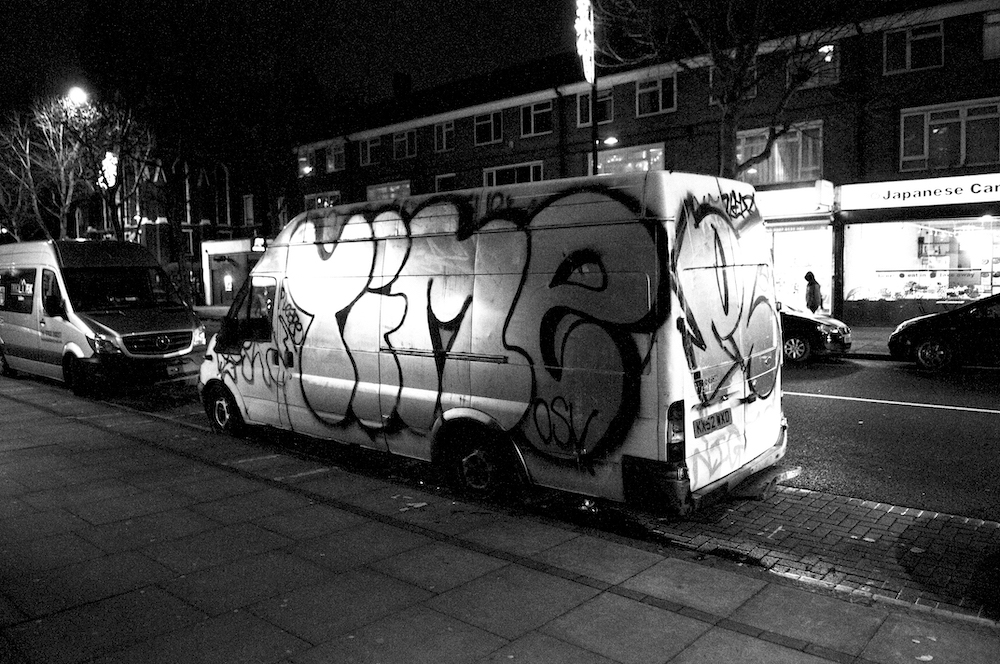The Graffiti Trucks of London

Graffiti tuck, London, 2018.
Text Dr. Theo Kindynis
The origins of graffiti writing in London can arguably be traced to the UK publication of Henry Chalfant and Martha Cooper's Subway Art: a book that documents the early history of New York City's graffiti subculture – where trains provided a rolling canvas for writers to showcase their names “all city”. Known by many as “the bible” of graffiti, Subway Art quickly acquired the dubious accolade of becoming one of the most stolen books in Britain. Ever since it was first exported from New York during the 1980s, graffiti all over the world has centred around painting subways, trains and tracksides, and “riding the lines” to view graffiti.

Graffiti tuck, London, 2018.
In London, successive waves of clampdowns by the authorities and zero tolerance police tactics have succeeded in all but banishing graffiti from the city’s Underground network. But the surveillance, the raids, the prison sentences, the curfews – coupled with military-grade depot security: twenty-foot-high fences bristling with razor wire, motion sensors and infrared and analytic CCTV cameras – have also had the unintended consequence of pushing graffiti onto the streets.

Graffiti tuck, London, 2017.
The last of a dying breed of hardcore tube writers will sneer but the truth is that today, graffiti is more often painted in the backstreets of East End markets than in the yards and layups of the London Underground system. Yet as battered box vans trundle through the city’s centres of finance and commerce, graffiti writers have once again hijacked the circulatory system of the metropolis for their own ends: their cryptic codenames jostling for attention with the signs and signifiers of capital. Marc Vallée’s photographs capture this inadvertent outcome of a shifting interplay of subcultural style and social control.

Graffiti tuck, London, 2017.

Graffiti tuck, London, 2018.

Graffiti tuck, London, 2017.

Graffiti tuck, London, 2017.

Graffiti tuck, London, 2017.

Graffiti tuck, London, 2018.

Graffiti tuck, London, 2018.
Theo Kindynis is a criminologist and lecturer at Goldsmiths, University of London. His research focusses on the interrelationships between urban space, crime and social control.